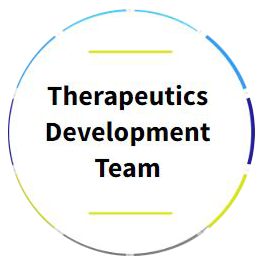Understanding Market Exclusivity for Orphan Drug Products

Here we explore the evolution and impact of market exclusivity policies in the EU and US, highlighting their role in fostering innovation and accessibility in rare disease treatment.
Market exclusivity for orphan drugs traces back to the early 1980s in the United States, with the landmark Orphan Drug Act of 1983. This legislation emerged from a pressing need to address “orphan” conditions, i.e., conditions that were abandoned or “orphaned” by the pharmaceutical industry, deemed unprofitable due to the small number of affected patients (fewer than 200,000 Americans). The act provided a compelling incentive for drug manufacturers: seven years of market exclusivity, during which other manufacturers of the same drug for the same condition could not enter the market, regardless of the patent status. This was a turning point, igniting a wave of research and development into treatments for rare diseases that had previously been neglected.
The European Union took note of the success seen in the US and, after much deliberation and after witnessing the positive impact on rare disease patients’ lives, introduced its own legislation. In 2000, the EU established its Orphan Drug Regulation, offering a ten-year market exclusivity from similar products within the same indication, to encourage the development of drugs for conditions affecting not more than five in 10,000 citizens. This move was crucial in harmonizing efforts across member states and fostering a supportive environment for research into rare diseases.
What market exclusivity looks like in the US and EU
Market exclusivity for orphan drugs is a regulatory mechanism designed to incentivize pharmaceutical companies to develop treatments for rare diseases. This exclusivity grants the drug manufacturer a specific period during which no similar medicinal products can be approved for the same therapeutic indication, irrespective of patent status. This period — seven years in the United States under the Orphan Drug Act of 1983 and ten years in the European Union as per the Orphan Drug Regulation of 2000 — provides a critical market advantage, allowing the company to recover the costs of research, development, and marketing without competitive products.
Possibilities of extending market exclusivity period by addressing the pediatric population
In both the EU and the US, pharmaceutical companies can extend the market exclusivity periods of their drugs by addressing pediatric populations in their drug development. Under the Pediatric Regulation, companies in the EU that conduct clinical trials in children as part of an agreed Pediatric Investigation Plan (PIP) can receive a six-month extension to their existing market exclusivity or patent protection. Similarly, the US Food and Drug Administration (FDA) also offers an additional six months of exclusivity to companies that test their drugs in children under the Best Pharmaceuticals for Children Act (BPCA). This extension is provided when companies conduct FDA-requested pediatric studies, regardless of the study’s outcomes. These incentives are designed to encourage the development and assessment of pharmaceuticals for pediatric use, ensuring that treatments are safely and effectively tailored to children, who may respond differently to medications than adults.
Patent vs. market exclusivity periods
Patents and exclusivity are critical mechanisms in the pharmaceutical industry, governed by separate statutes. Patents, issued by the United States Patent and Trademark Office, provide broad property rights during drug development. Exclusivity, granted upon FDA approval of a drug, delays competitor approvals and is contingent on meeting specific statutory criteria.
Although patents and exclusivity may overlap, they do not necessarily run concurrently and can cover different aspects of the drug. The system is designed to balance the need for innovation in drug development with the public’s need for more accessible drugs through generic competition. Patents typically last 20 years from the filing date, but various factors can affect this duration. Exclusivity, attached upon drug approval, can expire before the patent does. This leads to situations where a drug might have patent protection, exclusivity, both, or neither, depending on specific circumstances and timing.1
Orphan Drugs — Key Statistics
7,000 Number of rare diseases currently identified.2
6,340 Orphan Drug Designations granted by the FDA between 1983–2023.3
882 Orphan Drug Designations that resulted in at least one FDA approval for use in 392 rare diseases.3
2,350 Orphan Drug Designations approved by the EMA between 2000–2020.4
141 Orphan Drug Designations marketed in the EU between 2000–2020.4
Oncology (37%); Neurology (17%); Infectious diseases (9%) Top three therapeutic areas represented in ODDs from 1983–2019.5 |
Beyond market exclusivity: Other benefits of orphan drug status
Gaining orphan drug status brings several substantial benefits to pharmaceutical companies. The most direct benefit is market exclusivity, which prohibits competitors from marketing similar drugs for the same condition for a period (7 years in the US and 10 years in the EU) after the drug’s approval. Other benefits include:
Tax credits through the Orphan Drug Credit (US)
Initially, from 1983 until 2018, the orphan drug credit allowed companies to deduct 50% of the expenses associated with clinical testing under section 505(i) of the Federal Food, Drug, and Cosmetic Act. However, changes made to the tax code in 2017 during the Donald Trump administration reduced this credit to 25%, effective starting in 2018.
Grant funding for orphan drug development
The FDA allocates funds to support research, including projects on developing treatments for rare diseases. A comprehensive list can be accessed on the NIH Grants and Funding page6 for those interested in opportunities for rare disease product development funding from the FDA. The European Medicines Agency (EMA) does not offer research grants for sponsors of orphan medicines, but funding is available from the European Commission and other sources.
Reduced fees for regulatory filings
In the pharmaceutical industry, one significant incentive provided to companies developing orphan drugs is reduced fees for regulatory filings. This benefit lowers the financial barrier for companies during the approval process for drugs that treat rare diseases. By offering reduced fees associated with submitting applications for drug approval, such as New Drug Applications (NDA) or Biologics License Applications (BLA), regulatory agencies like the FDA help offset high drug development costs.
Assistance in the drug approval process
Regulatory agencies such as the FDA and the EMA support pharmaceutical companies in developing and approving orphan drugs. These agencies offer guidance on clinical trial design tailored for rare conditions, including advice on endpoints and study populations. They also provide advice meetings to address various development challenges. To expedite approval for orphan drugs where there is an unmet medical need, the FDA offers pathways such as Fast Track and Breakthrough Therapy Designation, and EMA offers Priority Review.
Furthermore, these agencies significantly reduce or waive application fees and show regulatory flexibility by accepting innovative statistical methods or less traditional evidence to evaluate drug efficacy. This comprehensive support helps mitigate the complexities of bringing treatments for rare diseases to market, facilitating quicker access to critical medications.
Final takeaways
The evolution and impact of market exclusivity policies in the EU and US have significantly shaped the landscape of rare disease treatment, fostering innovation and accessibility. Since the 1983 and 2000 landmark orphan drug designation policies came into effect, market exclusivity has served as a pivotal incentive for pharmaceutical companies to invest in the development of treatments for rare conditions. By granting periods of exclusivity, including exclusivity extensions for pediatric studies, these policies allow companies to recoup their investments in research, development, and marketing, ultimately benefiting patients by expanding the availability of life-changing therapies. As we look toward the future, continued collaboration will be essential in further advancing research and development efforts, improving outcomes for patients with rare diseases worldwide.
About the Therapeutics Development Team
Cytel’s Therapeutics Development Team is comprised of specialized, multidisciplinary thought leaders dedicated to advancing the science of trial design. With our deep scientific expertise, unparalleled technology, and pioneering methodologies, you can make clinical trial decisions with confidence.
|
Have questions? Get in touch with our experts: Erika Spens, Director Regulatory, Affairs; Sofie Broberg, Senior Consultant, Regulatory Affairs; Anna Törner, VP, Strategic Regulatory Affairs; and Linda Nord, Senior Consultant Regulatory Affairs: |
Notes
1 US Food and Drug Administration. (2020). Frequently asked questions on patents and exclusivity.
2 National Organization for Rare Disorders. Rare disease facts & statistics.
3 Fermaglich, L. J., & Miller, K. L. (2023). A comprehensive study of the rare diseases and conditions targeted by orphan drug designations and approvals over the forty years of the Orphan Drug Act. Orphanet Journal of Rare Diseases, 18(1).
4 Montanaro, N., Bonaldo, G., & Motola, D. (2021). Removal of the EMA orphan designation upon request of the sponsor: cui prodest? European Journal of Clinical Pharmacology, 77(7).
5 Miller, K. L., Fermaglich, L. J., & Maynard, J. (2021). Using four decades of FDA orphan drug designations to describe trends in rare disease drug development: substantial growth seen in development of drugs for rare oncologic, neurologic, and pediatric-onset diseases. Orphanet Journal of Rare Diseases, 16(1).
6National Institutes of Health. Find grant funding: “rare disease.”
Read more from Cytel’s Perspectives:
Sorry no results please clear the filters and try again

Orphan Drug Designation for Rare Diseases

Strategies to Overcome Limited Patient Population Challenges in Rare Disease Studies

Bayesian Strategies in Rare Diseases



